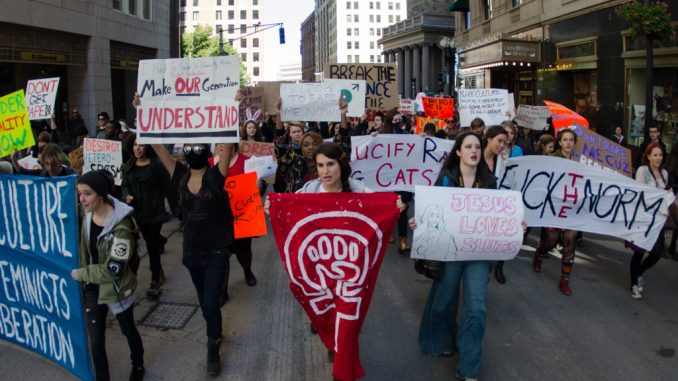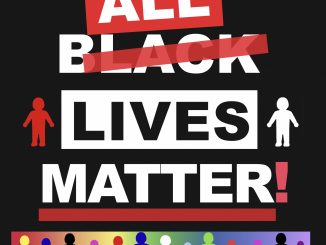
Introduction
With the development of the Internet, the cost of people getting in touch with various information has been reduced, and the expansion of the public discourse space has given people more opportunities and places to express their ideas. However, this does not mean that the Internet is a place where everyone is equal, especially between men and women. Structural inequality still potentially has an impact on the development of the Internet. Structural inequality refers to the unequal status between people, which leads to differences in opportunities and rights (United Nations, 2021). The construction of the Internet was influenced by the brotherly culture of Silicon Valley. Until now, the Internet is still dominated by men (Turner, 2021). This gender gap has a deep connection and influence on gender inequality on the Internet. This article will analyze the current phenomenon of gender inequality on the Internet and the factors that lead to this phenomenon, and explore whether the occurrence of this phenomenon may be reduced in the internet.
Sexism in the Internet
· Stereotypes of women
Stereotypes are derived from a psychological concept, which refers to people’s fixed views of a certain group of people, a certain region, or a certain thing based on knowledge, concepts, and an expected identification structure (Gendered Innovations, 2021). Society nowadays is heavily infiltrated by the Internet, which diversified media provide the most direct perception path to stereotypes. According to Google’s automatic search engine for female-related vocabulary and sentences, gender inequality has been participating in the Internet along with social consciousness. People have very clear definitions and restrictions on female images(Noble, Safiya U, 2018). For example, women can’t drive and should stay at home, women should not have the right to vote, etc. The image of women has been singularized, the family value of women has been increasingly consolidated, and the social value has gradually collapsed. Last fall, Professor Vicente Ordóñez discovered that the image recognition software model he was building also seemed to contain this gender inequality. “When it recognizes a photo of a kitchen, it usually thinks of women, not men” (Tom Simonite, 2017). When women try to enter an industry that was once monopolized by men, they will be forced to put various labels on them because of their gender. For example, people often associate “female drivers” with “road killers”, creating a stereotyped perception that women are not suitable for driving. But in fact, according to data, the accident rate of female drivers is much lower than that of males, from 1975 to 2015, twice as many men died in car accidents as women (argionislaw, 2021).

· Commoditization and thingification of women
Recently, an advertisement related to the sale of used cars by the German car dealer Audi in China has caused public outrage among Chinese audiences. In the advertisement, the mother-in-law uses exaggerated and rude gestures to examine the woman who will become her daughter-in-law, from nose to ears and teeth. Finally, she made an OK gesture, and then the page of Audi’s second-hand car trading website shown, and dubbed “Official certification only at ease”. This advertisement clearly shows Audi’s “objectification” of women, comparing women to second-hand cars, and the mother-in-law’s insulting physical examination to daughter-in-law to “official certification” of second-hand cars. Materialization is a typical product of capitalist society, which refers to the commercialization of human bodies, while materialization of women refers to women as commodities and making women into consumer goods in capital society(DM Szymanski, 2021). And this kind of objectification of women is not uncommon on the Internet.
Audi used car ads. Source: Youtube
Factors that aggravate this phenomenon on the Internet
· The low penetration rate of technology products to women
According to a report by the International Telecommunication Union, Among the 85 countries that provide data to the ITU, men in 61 countries have more mobile phones than women, the proportion of women using the Internet is 12% lower than that of men, while in the least developed countries, this proportion can rise to 39% (Bhaskar Chakravorti, 2017). And this kind of gender gap in the Internet field has caused men more men voice, further deepening the gender inequality on the Internet.

· Algorithmic bias caused by structural inequality
People usually think that algorithms are neutral and that humans are prone to errors and biases. Because of the super insight and exploration ability, as well as the obscure and difficult calculation process, the algorithm has put on the technical coat of “objective neutrality”, thus creating People’s trust in algorithms (Olivier Penel, 2019). But historically, the image of deep-rooted prejudice against certain groups has led to human prejudice. This structural prejudice of human society is copied and amplified in computer models, resulting in “algorithmic bias” (greenlining, 2021). This kind of prejudice will cause the algorithm program to lose its objective and neutral position in the process of information production and distribution, and affect the public’s objective and comprehensive cognition of information. According to research, men have been dominant in the computer industry since 1980, even if programmers did not intentionally discriminate, the unitary team may provide unrepresentative or flawed data containing historical inequality ( Lee, 2019). This can be seen from the aforementioned female related words in Google’s automatic search. People will be misled by the decision made by the algorithm and think it is fair and correct. For example, in 2018, Reuters revealed that the automated artificial intelligence recruitment system developed by Amazon’s engineering team for a year was obviously gender-based. When the algorithm selects resumes, it downgrades resumes that contain words such as “female” and grants privileges that contain verb types that men tend to use (Rachel Goodman, 2018).

The awakening of female consciousness on Internet in recent years
Due to social progress, women have received more education and gradually realized the impact of gender inequality on them. And women began to refuse to be imprisoned by stereotypes. Recently developed such a challenge on China’s tiktok, called”Refusal of Appearance Anxiety”. In order to encourage girls to face and accept the truest themselves, many female bloggers have participated in this challenge. They confidently show themselves in front of the camera with cosmetic and filter, hoping that women will not be anxious and inferior because of their appearance. In addition, when faced with the inequality or even insulting treatment women suffered, other girls broke their silence and bravely stood up to criticize and condemn this behavior. For example, “Metoo” originated from a social movement to expose and criticize various forms of improper sexual behaviors that happen to women(MARYVILLE UNIVERSITY, 2021). This movement introduced a critical awareness of the patriarchal system and inspired women’s pursuit of gender equality.
Conclusion
All in all, the current Internet, due to structural inequality, has led to women’s lack of use and manipulation, and has been dominated by men for a long time. Therefore, for a long time in the past, it has aggravated the power of this gender inequality, which resulting in deep-rooted gender inequality in the current Internet. However, the Internet itself is neutral. With the advancement of society, the development of technology and the awakening of female consciousness, more and more women choose to join the digital future and bravely speak out for inequality online. Therefore, maybe in the future, the gender inequality will decrease a lot or even disappear.
Reference:
Noble, Safiya U. (2018) A society, searching. In Algorithms of Oppression: How search engines reinforce racism. New York: New York University. pp. 15-63.
Lusoli, Alberto, and Turner, Fred (2021), ‘“It’s an Ongoing Bromance”: Counterculture and Cyberculture in Silicon Valley—An Interview with Fred Turner. Journal of Management Inquiry 30(2), pp. 235-242.
Nicol Turner Lee & Paul Resnick & Genie Barton. (2019). Algorithmic bias detection and mitigation: Best practices and policies to reduce consumer harms. https://www.brookings.edu/research/algorithmic-bias-detection-and-mitigation-best-practices-and-policies-to-reduce-consumer-harms/
Gendered Innovation. (2021). The definition of Stereotypes. https://genderedinnovations.stanford.edu/terms/stereotypes.html
argionislaw. (2019). Who Causes More Car Accidents, Male or Female Drivers? https://www.argionislaw.com/car-accidents/who-causes-more-car-accidents-men-or-women/
Bhaskar Chakravorti. (2017). There’s a Gender Gap in Internet Usage. Closing It Would Open Up Opportunities for Everyone. https://hbr.org/2017/12/theres-a-gender-gap-in-internet-usage-closing-it-would-open-up-opportunities-for-everyone
Olivier Penel. (2019). Algorithms, the Illusion of Neutrality. https://towardsdatascience.com/algorithms-the-illusion-of-neutrality-8438f9ca8471
greenlining. (2021). ALGORITHMIC BIAS EXPLAINED: HOW AUTOMATED DECISION-MAKING BECOMES AUTOMATED DISCRIMINATION. https://greenlining.org/publications/reports/2021/algorithmic-bias-explained/
Rachel Goodman. (2018). Why Amazon’s Automated Hiring Tool Discriminated Against Women. https://www.aclu.org/blog/womens-rights/womens-rights-workplace/why-amazons-automated-hiring-tool-discriminated-against
maryville University. (2021). Understanding the Me Too Movement: A Sexual Harassment Awareness Guide. https://online.maryville.edu/blog/understanding-the-me-too-movement-a-sexual-harassment-awareness-guide/

This work is licensed under a Creative Commons Attribution-NoDerivs 2.0 Generic License.


